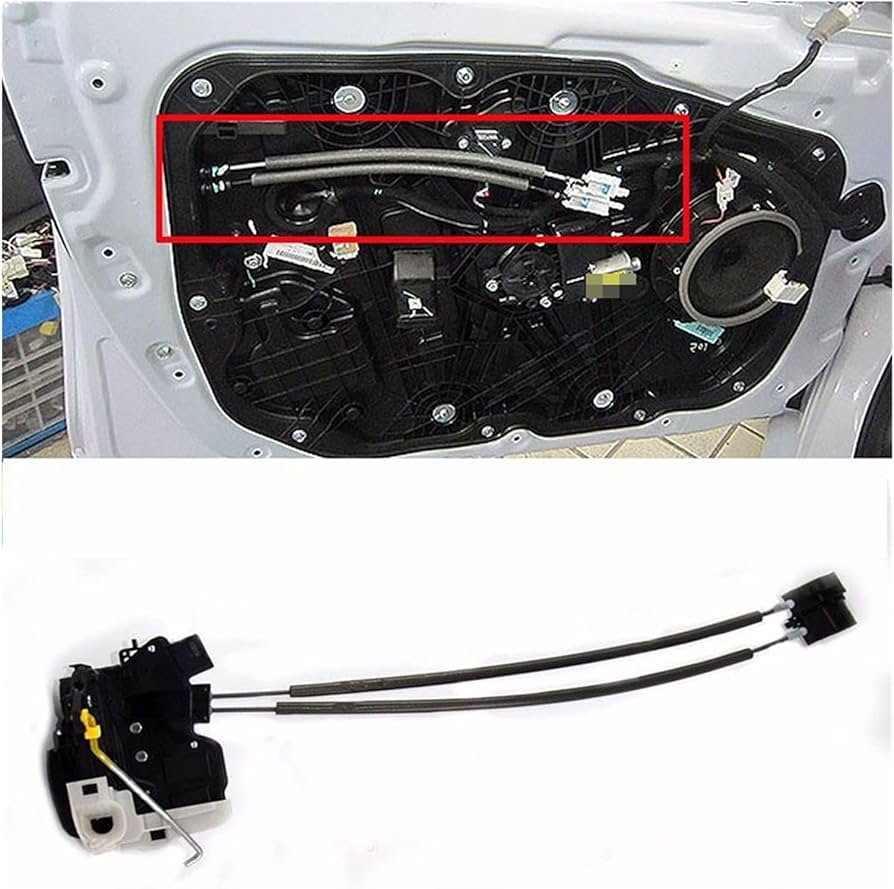A car's door lock actuator is a vital component of your vehicle's locking mechanism, ensuring the doors lock and unlock smoothly. However, improper use of car keys can lead to damage, particularly to the door lock actuator. To help you avoid expensive repairs and ensure the longevity of your car's locking system, it's essential to use your car keys correctly. This article will guide you through the best practices to prevent damage to your car’s door lock actuator and other components of the lock.
Before diving into preventive measures, it's crucial to understand the door lock actuator itself. This small motorized device is responsible for operating the lock mechanism in your car's doors. When you press the lock or unlock button on your key fob or manually turn the key in the door, the door lock actuator engages and moves the lock's internal components. Damage to this part can result in malfunctioning locks, which can be both inconvenient and expensive to repair.
One of the most common mistakes drivers make is forcing the key into the door lock when it doesn't seem to fit correctly. This can cause significant damage not only to the key but also to the door lock actuator. If your key doesn't slide in easily, take a moment to check for debris or other blockages inside the lock. Forcing the key can cause wear on the internal components, leading to premature failure of the actuator.
Maintaining a properly lubricated door lock is essential to avoid damaging the door lock actuator. Over time, dust and grime can accumulate in the lock mechanism, making it harder for the key to turn smoothly. This increased friction puts added stress on the door lock actuator, which can eventually lead to failure. Use a quality silicone-based lubricant to keep the lock working smoothly and prevent strain on the actuator.
In modern vehicles, the door lock actuator is designed to work with your car's remote key fob system. While manual locking with the key is still an option, over-reliance on this method can place unnecessary wear on both the key and the actuator. Whenever possible, use the key fob to lock and unlock your car doors, reducing the frequency of manual locking and minimizing potential strain on the door lock actuator.
Although the key fob doesn't directly interact with the door lock actuator, it's the device that sends the signals to engage it. Dropping, banging, or mistreating your key fob can damage its internal components, leading to issues with locking and unlocking your doors. If the signal isn't being sent correctly, the door lock actuator won’t respond, leaving your doors vulnerable. Handle your key fob with care to avoid this problem.
If you notice that turning the key is becoming difficult, or you hear unusual noises from the door lock, it could be an early sign of damage to the door lock actuator. Ignoring these symptoms can lead to a total failure of the actuator, which may require an expensive replacement. Address any signs of trouble promptly by having a professional inspect the lock mechanism and the actuator.
Over time, your car key can wear down, especially if it's used frequently for manual locking and unlocking. A worn-out key may no longer fit properly into the lock, increasing the risk of damaging the internal components of the door lock, including the door lock actuator. If you notice any signs of wear on your key, consider getting a replacement before it causes harm to your lock.

It may seem obvious, but using the wrong key in your door lock can cause serious damage to both the lock and the door lock actuator. Whether it’s a mistake or due to using an improperly cut spare key, forcing the wrong key into the lock can result in a jammed or broken lock mechanism. Always double-check that you're using the correct key to avoid such issues.
In modern vehicles, the door lock actuator relies on the car’s electrical system to function properly. A failing battery or electrical issues can disrupt the actuator’s operation, potentially causing it to wear out prematurely. To prevent this, ensure your vehicle's battery and electrical components are in good condition. If you experience frequent issues with the locks, it might be worth checking the battery as well as the door lock actuator.
Finally, one of the best ways to avoid issues with your car’s door lock actuator is to schedule regular maintenance checks. Professional mechanics can ensure that the lock mechanism, actuator, and other related components are functioning as they should. Early detection of potential problems will save you money on more costly repairs later.
Using your car keys correctly can significantly reduce the risk of damage to your car's locking system, especially the door lock actuator. By avoiding force, maintaining the lock mechanism, and handling your key fob with care, you can extend the life of the actuator and prevent expensive repairs. Remember to stay alert to any signs of trouble and get regular maintenance to keep your locks functioning smoothly for years to come.
GET A QUOTE